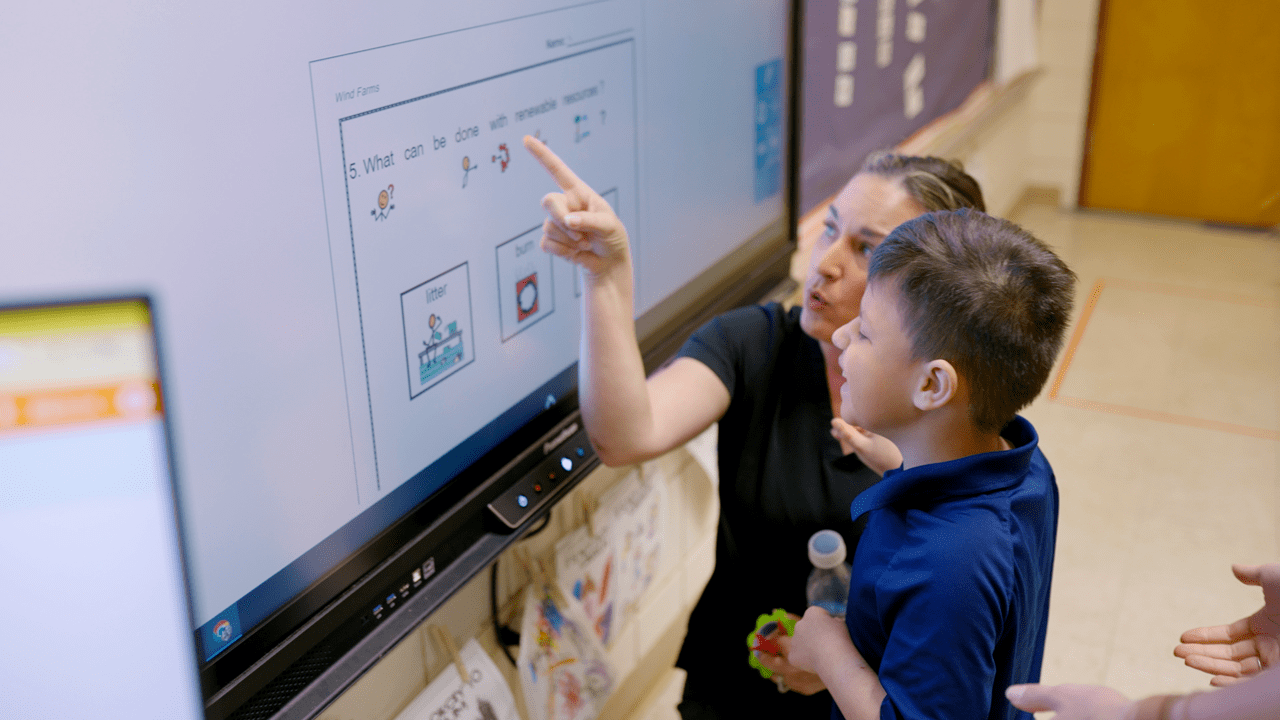Frameworks for Behavioral Support
One way that educators organize interventions for all students is referred to as multi-tiered system of support (MTSS). Tiered systems of behavioral support align behavioral, social-emotional, and mental wellness interventions and supports for students in a single three-tiered continuum. Positive Behavioral Interventions and Supports, or PBIS, is a three-tiered framework for integrating and aligning data systems and behavior practices to support ALL students. Both of these systems are research-based, whole-student approaches.
Use of tiered frameworks such as MTSS and PBIS offers positive outcomes, such as greater academic achievement, reduction of exclusionary discipline, and improved teacher outcomes, to include students with disabilities. More information can be found at the National Technical Assistance Center on PBIS, with additional outcome information in evaluation briefs.
Here is the structure of a three-tiered framework:
Tier 1
Universal (All Students)
School-wide, equitable behavior expectations for all students and staff.
Tier 2
Targeted (Small Group)
Small-group interventions that are targeted at groups of 3–5 students with similar needs.
Tier 3
Intensive
Targeted, intensive interventions for individual students (may be completed in groups of 1–3 for students with similar needs).
Implementing a tiered system of support offers intervention teams the opportunity to create decision-making criteria based on the systematic analysis of behavior data to identify students who need additional support, rather than waiting for students to fail. Once data is analyzed, students are proactively identified for different levels of support and offered interventions matched to the level of need.
Teams who work with groups of students and/or individual students are able to make data-informed decisions based on the student’s or groups of students’ response(s) to a particular intervention. Instead of waiting for behavior to become more intense and impact an individual’s access to instruction, a tiered framework allows teams to target behavior deficits early and increase proactive behaviors for all students.
More About Tier 1 Support
Multi-tiered supports are based on a problem-solving model designed to prevent unexpected or unwanted student behavior by establishing universal behavior expectations. These expectations are taught to all students, who are reinforced in a variety of different ways (such as positive praise or access to activities) for demonstrating the expectations. Feedback is provided to students to correct any errors. This level of support is known as Tier 1.
Instruction in Tier 1 may look like whole-class practice of walking in the hallway, watching a video that models expected classroom behavior, or posting visuals of expected behaviors that students can reference in advance of needing to show the skill. This is good instructional practice.
Tier 1 Example
At the beginning of the year, Mr. Jones reviewed behavior expectations with his class. He used video modeling to show students how to engage in different expectations and provided practice opportunities for all students. Students who demonstrated the expected behaviors received reinforcement.
More About Tier 2 Support
While Tier 1 works for a majority of students (80–85%), some students will need more teaching and practice opportunities. This additional layer of targeted instruction and practice is provided in addition to Tier 1 supports. Using data such as classroom referrals or anecdotal notes, the teacher and other team members may identify students who need additional practice with specific skills. This level of support is known as Tier 2.
Tier 2 instruction may look like small-group (3–5 students) instruction with the counselor, social skills groups targeting a variety of behaviors, self-monitoring skills, Check-In/Check-Out (CICO), or small-group instruction on behavior expectations.
Tier 2 Example
Of the 23 students in the classroom, five students needed additional support. Despite the behavior instruction provided to the class, these students continued to engage in behavior that interfered with their learning and the learning of others. Mr. Jones was most concerned about their inability to think before acting. The counselor provided small-group lessons targeting decision-making and self-regulation skills twice per week with these students. This group continued to practice behavior expectations with their class as well. Their progress was frequently monitored to ensure they were responding to the intervention.
More About Tier 3 Support
Even with additional, targeted intervention in Tier 2, 5–10% of students will require more instruction and support to demonstrate expected behaviors. This level of support is known as Tier 3.
Students receiving this level of intervention still receive the universal instruction provided to all students and the targeted, small-group instruction provided at Tier 2, but now are also provided with intensive and individualized instruction to meet specific skill deficits.
Tier 3 Example
One student who received the Tier 2 targeted intervention did not make progress and was still displaying interfering behavior. Mr. Jones worked with a team to develop a Functional Behavior Assessment (FBA) and Behavior Intervention Plan (BIP) to better understand the student’s behavioral needs. Direct instruction of the skill deficits identified through the FBA was provided. This instruction was given in addition to the continued small-group instruction and the classroom practice of behavior expectations. Progress was frequently monitored to ensure the student was responding to the intervention.
The data collected in Tier 3 may be more specific to the targeted skill or behavior being addressed. This may seem like yet another task to add to our already full plate. Instead of thinking of a tiered system of support as something new, think of what you are already doing, the data you are collecting, and how you can use that data to make informed decisions.
Implementing a tiered system of support can help you identify those students who need additional support, implement data-supported interventions for those students, and continue to collect data (monitor progress) to assess the effect your chosen interventions have on your students. When implemented with fidelity, a tiered system of support for behavior will likely save you time as you will be proactively providing all students with the behavior instruction they need rather than providing instruction as a response to more challenging behavior. That’s a win for everyone!



